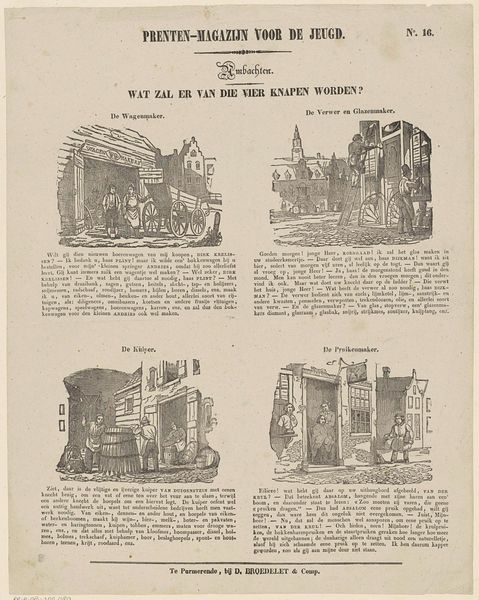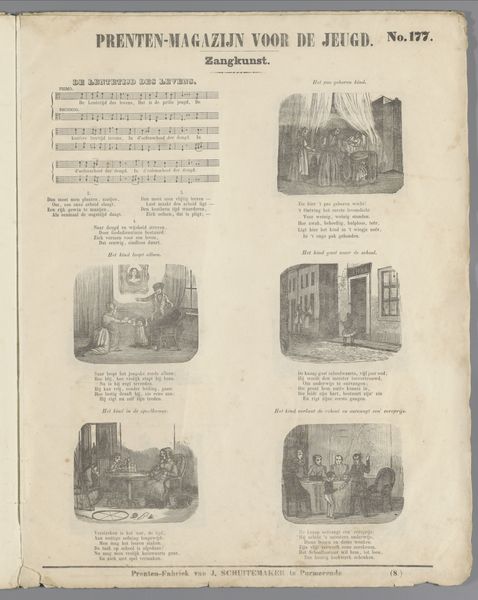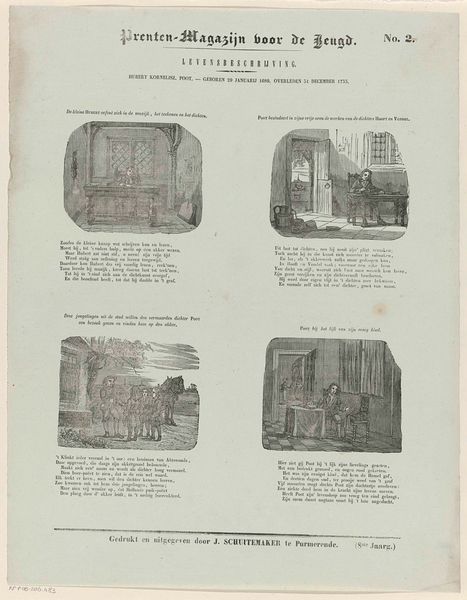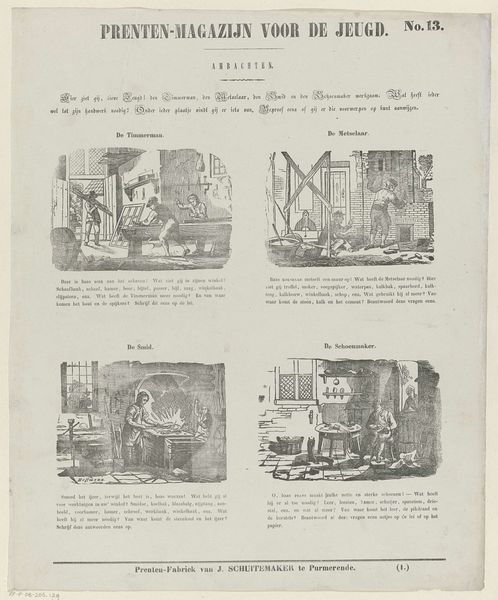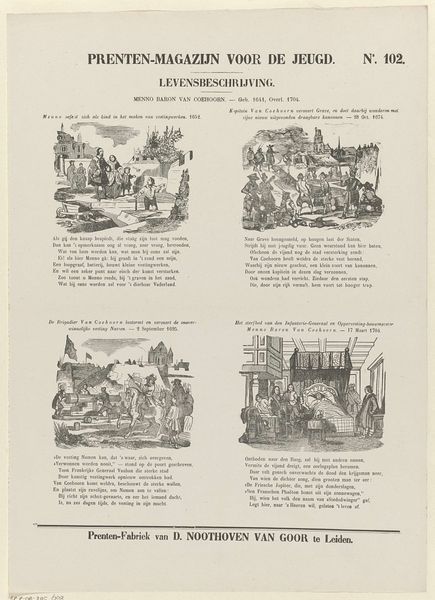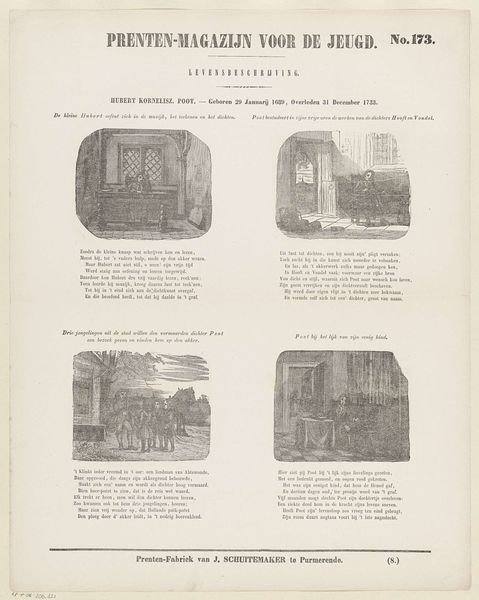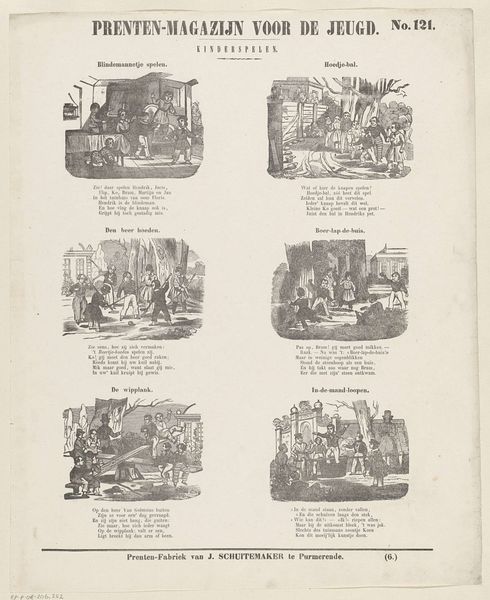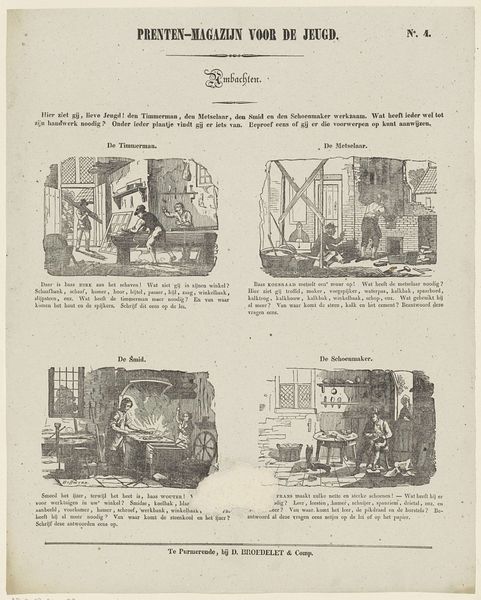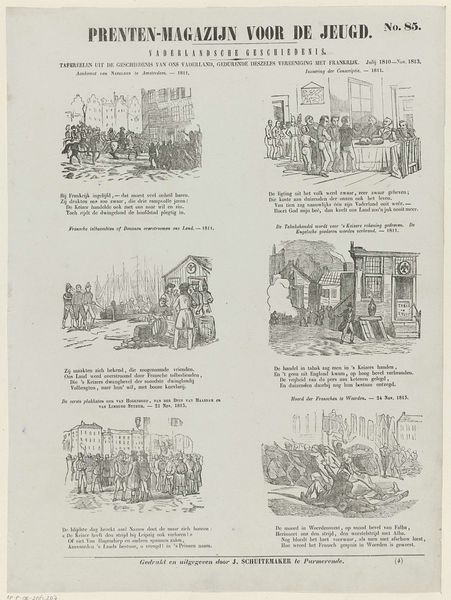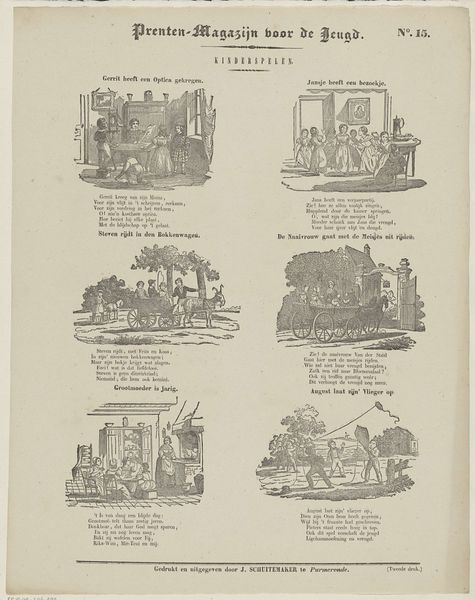
print, engraving
#
narrative-art
# print
#
genre-painting
#
engraving
Dimensions: height 409 mm, width 330 mm
Copyright: Rijks Museum: Open Domain
Curator: This engaging print, made around 1850 by Jan Schuitemaker, is titled “Wat zal er van die vier knapen worden?” It’s Dutch for "What will become of these four lads?" and showcases different trades. Editor: My first impression is of narrative density. It’s like a storyboard condensed into one sheet, relying heavily on repetition and implied sequentiality to suggest meaning. The use of stark lines and minimal shading gives it a utilitarian, instructional feel. Curator: Exactly. It's printed on a magazine page meant for youth. Look closely—each panel features a distinct craft: wagon making, glass blowing, coopering, and wig making. All crucial trades in that period of industrial and commercial rise in The Netherlands. Editor: I'm intrigued by how the scenes use architecture as framing devices—each trade seems contained within a portal, creating a sense of specialization, of distinct realms of activity. Is this perhaps reflective of growing vocational division during the 19th century? Curator: It certainly suggests that. The four scenes speak to the social importance of craft in that era and ask questions about the young people’s future. Notice how each scene features men practicing traditional skills. It is likely encouraging these children to seek future livelihoods in them. Editor: And how about the limited gray scale used in this engraving? Is it emphasizing a certain objectivity? The rigid formalism here almost suppresses affect. The whole piece seems didactic. Curator: That’s right. It's like a visual primer, presenting the fundamentals of these professions and the possibilities inherent in artisanal training. Also notice how the lads look. What does their gender imply, in your eyes? What about their ages? Editor: Very important—gender solidifying the man's domination in the workplace, while suggesting traditional apprenticeship pathways where these youths inherit practical knowledge by shadowing established artisans. All of the people presented here appear white too; who is absent? What are we to take away from their lack of presence in this engraving? Curator: Very interesting considerations to have when we are approaching this piece today. Ultimately, this is such a telling visual document of its time. It carries social values we may agree or disagree with. Editor: Indeed. This structured assembly of labor leaves me considering the ideological apparatuses involved with communicating industry’s evolution to the young.
Comments
No comments
Be the first to comment and join the conversation on the ultimate creative platform.
